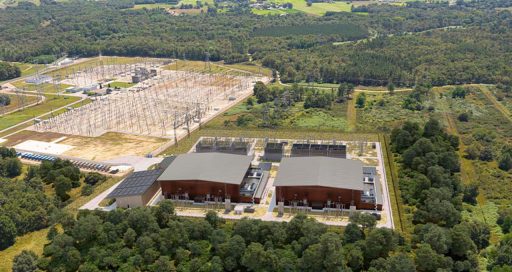What robust, innovative solutions exist for electricity storage?
Reading time: 6 min
Electricity storage makes it possible to manage renewable energy flows and balance the electricity grid. Various storage technologies exist, each with their advantages and their drawbacks. We take an overview of a rapidly expanding sector where innovation is thriving.
![]()
Against a backdrop of international tensions and disturbance in the global energy market, in May 2022, the European Commission laid out its “REPowerEU” plan with three objectives: to implement energy savings, produce clean energy and diversify energy supply sources. Brussels emphasised that this plan is “backed by financial and legal measures to build the new energy infrastructure and system that Europe needs”. REPowerEU forms part of a broader energy transition trajectory at the European and indeed international level. It complements the “Fit for 55” programme – a series of measures designed to reduce Europe’s greenhouse gas emissions by at least 55% by 2030.
“Adequate storage is a prerequisite of energy transition”, says Markus Popp, Omexom Brand Director at VINCI Energies, the specialist in major electricity grids. The storage issue is a major one, due not only to the electrification of mobility and manufacturing processes, but also to the evolving energy mix, with the integration of new electricity sources like solar and wind. “These renewable energies are inherently intermittent because they are subject to variations in wind and sunshine”, adds Markus Popp.
While renewable energies remain limited in the energy mix, techniques for optimising electricity grids make it possible to counteract this intermittent supply. But international targets for reducing the proportion of carbon-intensive electricity are changing the game. Then there are changes in how we use electricity: the trend toward decentralised electricity production and the increase in individual and collective self-consumption require the ability to use excess energy produced throughout the day at peak demand times.
“Adequate storage is a prerequisite of energy transition”
The benefit of electricity storage is precisely that it provides a solution for balancing production and consumption. But electricity is difficult to store: it must first be transformed into another form of energy, whether mechanical, thermal or chemical (see “The different storage technologies” boxout). But each storage technology has its limits. “Lithium-ion batteries and hydrogen currently offer the greatest potential for development”, says Frank Westphal, CEO of the Industry and Energies division of VINCI Energies Germany.
Technologies at different maturity levels
Batteries meet storage needs over a period of hours or days, for low-to-medium quantities of power and energy. Several battery technologies are already mature: lithium-ion, sodium-sulfur, lead-acid and nickel-cadmium batteries. Others, such as sodium-ion batteries and graphene, are still in the development phase and should be able to address some limiting factors like optimised charging times, storage capacity and the use of less scarce resources
“LFP (lithium ferro phosphate) batteries are especially promising”, suggests Arnaud Banner, Technical and Innovation Director at Omexom. “Their components are more eco-responsible than those in lithium-ion batteries, because they can get rid of Nickel and Cobalt. They today already have become the dominant technology for stationary storage”. At the beginning, their low energy density made them unsuitable for electrical vehicles. Nowadays, they have improved and for example, TESLA Motors announced their latest MEGAPACK is free from nickel and cobalt.
Three approaches to battery storage development are currently under way in France: the “RINGO Project”(*) proposed by RTE, “behind-the-meter” (BTM) batteries for private homes, and electric vehicles themselves (see “Using electric vehicles for energy storage” boxout).
The promise of hydrogen
And then there is hydrogen, a “chemical” solution to large-scale energy storage and also in electric vehicles. Produced via water electrolysis, hydrogen can be compressed in gas, liquid or solid form. If the transformation process is powered by renewable energy sources, hydrogen becomes a green energy, capable in particular of decarbonising certain industry and transport sectors.
Another application for hydrogen-based storage is the conversion of electricity into gas (P2G or power-to-gas), which converts surplus renewable electricity into gas through water electrolysis. The hydrogen is then stored, or mixed into the natural gas system to reduce its hydrocarbon content.
By 2050, hydrogen’s share in the worldwide energy mix should more than double, from the current 19% to 45%, with 40% produced from solar and 29% from wind. In other words, storage is a crucial issue.
The different storage technologies
There are currently a range of systems for storing electricity:
- Gravity storage using water in pumped-storage Hydro power stations (PSH)
- Thermodynamic storage using compressed-air storage systems
- Kinetic energy storage using flywheels
- Electrochemical storage using batteries or chemical storage in the form of hydrogen
In France, PSH technology and compressed-air energy storage have limited potential for development. Flywheel energy storage (FES) can only provide very short storage times and a limited quantity of stored energy. But electrochemical storage offers far greater possibilities.
![]()
Using electric vehicles for energy storage
A car sits idle for 95% of its lifetime, and average use of an electric vehicle requires less than 80% of its battery capacity for everyday journeys. When connected to a smart grid, thanks to the energy stored in its battery, a stationary electric vehicle could therefore become a temporary electricity supplier. It could be used to power homes, especially in peak electricity demand periods. This so-called “vehicle-to-grid” (V2G) technology allows the vehicle’s owner to receive payment in exchange for the temporary use of their battery.
![]()
*The “virtual line” concept involves balancing storage and release from moment to moment: when a line in the grid is saturated, a battery stores the excess electricity upstream of this line.
13/10/2022





